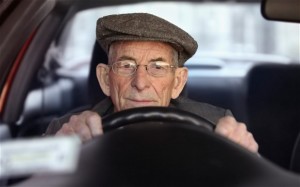 The busier the roadways become and the more in-vehicle technology we have to contend with, the more focus is required in order to stay safe on the road. Of course we realize that good vision is imperative when maneuvering several thousand pounds of steel around at high rates of speed, however we cannot discount hearing acuity as well Healthy Hearing puts it perfectly – “Good hearing is essential to good driving.” That isn’t to say that those who have a hearing impairment cannot be on the road, however, it makes driving that much more dangerous.
The busier the roadways become and the more in-vehicle technology we have to contend with, the more focus is required in order to stay safe on the road. Of course we realize that good vision is imperative when maneuvering several thousand pounds of steel around at high rates of speed, however we cannot discount hearing acuity as well Healthy Hearing puts it perfectly – “Good hearing is essential to good driving.” That isn’t to say that those who have a hearing impairment cannot be on the road, however, it makes driving that much more dangerous.
Unless you suffer from hearing loss, you most likely don’t realize how often you rely on your hearing while out on the roadways. That honk coming from the next lane to warn you that you are drifting too close, the scream of a siren driving up from behind, the motorcycle revving its engine as it passes by and even the sound of unintended blinker use all rely on our ability to hear well. The most dangerous aspect of hearing loss while driving is that most hearing loss comes on gradually. A person who is born deaf realizes the need to be extra vigilant while driving; as hearing acuity gradually diminishes however, you don’t realize what you are missing, which could lead to an accident.
Considering that hearing loss and aging tend to go hand in hand, let’s look at driving safety in older drivers and how hearing loss can affect that. AARP wrote a great article on hearing and driving and suggested the following tips to be a safer driver if you suffer from hearing loss.
- Be aware of any changes in your hearing acuity
- Visit your physician or audiologist if you think you might have hearing loss
- Adjusting to a hearing aid can take time so use extra precautions during the transition
- Turn the air conditioner or heat down to the lowest setting to minimize noise
- Ask passengers to keep conversations quiet so you won’t be distracted
- Turn down the music or turn it off completely while driving
- Consider installing assistive devices on your vehicle such as a wide rear-view mirror
- Ensure that your side mirrors are adjusted properly
- Frequently check all mirrors and be aware of all the traffic around
- Watch for flashing lights in your mirrors
- Watch for trains and / or flashing lights when crossing train tracks
- Periodically check your turn signal to make sure it is not left on unintentionally
Statistically speaking, drivers over the age of 75 have the second highest number of fatal car accidents among drivers. Their reflexes just aren’t what they used to be and often the ability to react quickly and make instant decisions is diminished. When you add in impaired vision or hearing loss, getting behind the wheel as an older driver could be one of the most dangerous things you do! You can alleviate some of the risk by making sure you keep up on your hearing health; get regular hearing checkups and make sure to invest in the right hearing aids or other assistive devices needed in order to hear better. Remember good hearing is essential to good driving.

